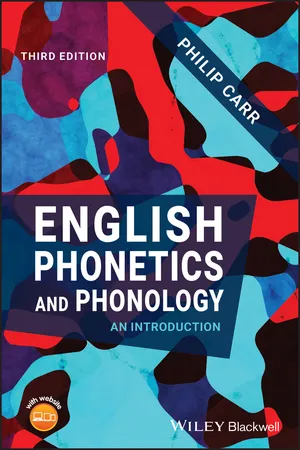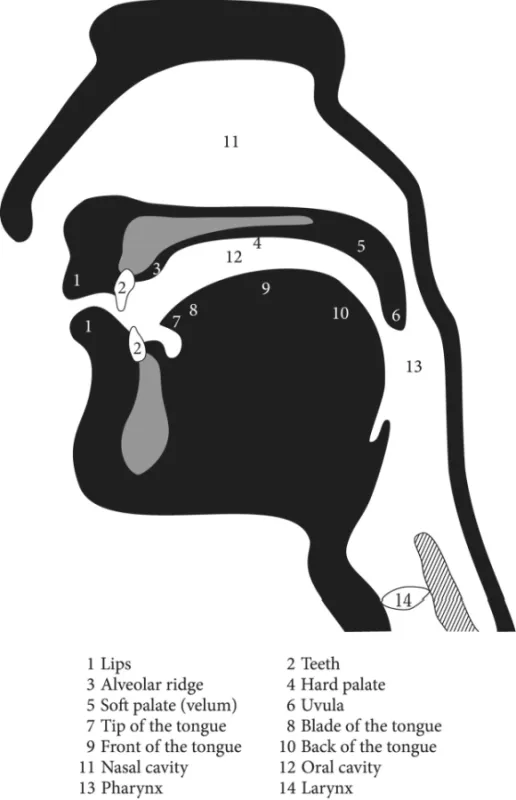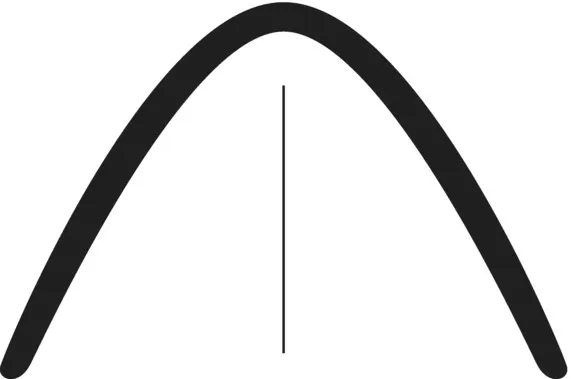
- English
- ePUB (mobile friendly)
- Available on iOS & Android
About this book
A new edition of the popular introductory text on the phonological structure of present-day English.
A clear and accessible introductory text on the phonological structure of the English language, English Phonetics and Phonology is an ideal text for those with no prior knowledge of the subject. This market-leading textbook teaches undergraduate students and non-native English speakers the fundamentals of articulatory phonetics and phonology in an engaging, easy-to-understand style.
Rigorously expanded to include new materials on first and second language acquisition of English phonetics and phonology, this third edition, English Phonetics and Phonology boasts two new chapters on first-language and second-language acquisition of English phonetics and phonology. By introducing topics such as the mental lexicon and the emergence of phonological rules and representations, and graphophonemic problems in L2 acquisition, these two new chapters have been added to afford greater flexibility for teachers and increased support for non-native English speakers. Expanded website content includes exercise-linked sound files.
- Based on the author's 34 years of teaching English Phonetics and Phonology in the UK and France
- Includes coverage of various accents in English and second-language acquisition
- Hugely successful textbook for the introductory Phonetics course, now in its third edition
- References and exercises across all chapters to guide students throughout the work
- Provides access to companion website for additional learning tools, sound files, and instructor resources
English Phonetics and Phonology is an indispensable resource for undergraduate students in courses on Phonetics and Phonology with no prior knowledge of theoretical linguistics and non-native English speakers alike.
Frequently asked questions
- Essential is ideal for learners and professionals who enjoy exploring a wide range of subjects. Access the Essential Library with 800,000+ trusted titles and best-sellers across business, personal growth, and the humanities. Includes unlimited reading time and Standard Read Aloud voice.
- Complete: Perfect for advanced learners and researchers needing full, unrestricted access. Unlock 1.4M+ books across hundreds of subjects, including academic and specialized titles. The Complete Plan also includes advanced features like Premium Read Aloud and Research Assistant.
Please note we cannot support devices running on iOS 13 and Android 7 or earlier. Learn more about using the app.
Information


1
English Phonetics: Consonants (i)
1.1 Airstream and Articulation


1.2 Place of Articulation
Table of contents
- Cover
- Table of Contents
- Prefaces to the First Edition
- Preface to the Second Edition
- Preface to the Third Edition
- Acknowledgements
- Sound Recordings
- About the Companion Website
- Figure 1 The organs of speech
- Figure 2 The International Phonetic Alphabet
- 1 English Phonetics: Consonants (i)
- 2 English Phonetics
- 3 English Phonetics
- 4 English Phonetics
- 5 The Phonemic Principle
- 6 English Phonemes
- 7 English Syllable Structure
- 8 Rhythm and Word Stress in English
- 9 Rhythm, Reversal and Reduction
- 10 English Intonation
- 11 Graphophonemics: Spelling–Pronunciation Relations
- 12 Variation in English Accents
- 13 An Outline of Some Accents of English
- 14 First‐Language (L1) Acquisition of English Phonetics and Phonology
- 15 Second‐Language (L2) Acquisition of English Phonetics and Phonology
- Suggested Further Reading
- Index
- End User License Agreement